Table of Contents
10
India After Independence

New and Divided Nation
When India became independent in August 1947, it faced a series of very great challenges. As a result of Partition, 8 million refugees had come into the country from what was now Pakistan. These people had to be found homes and jobs. Then there was the problem of the princely states, almost 500 of them, each ruled by a maharaja or a nawab, each of whom had to be persuaded to join the new nation. The problems of the refugees and of the princely states had to be addressed immediately. In the longer term, the new nation had to adopt a political system that would best serve the hopes and expectations of its population.
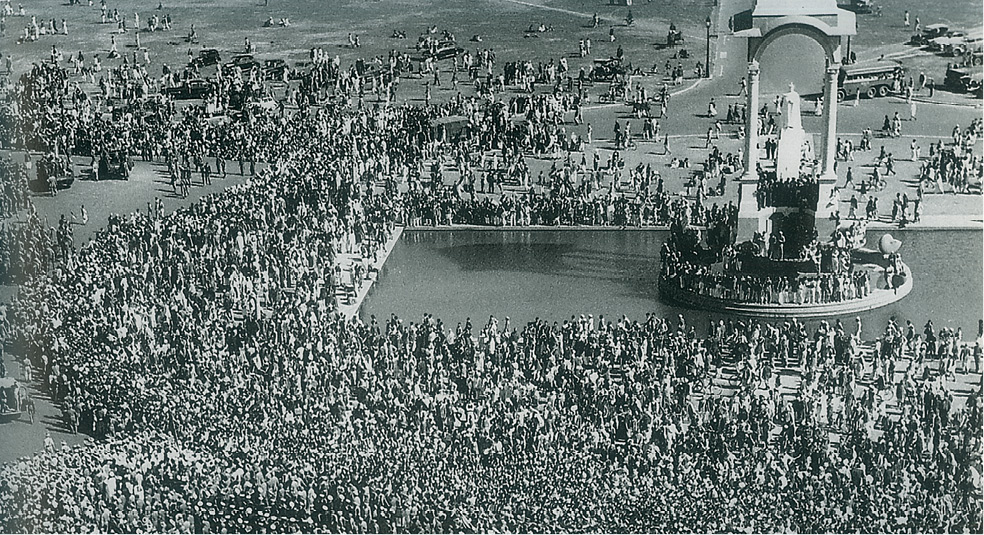
Fig. 1 – Mahatma Gandhi’s ashes being immersed in Allahabad, February 1948
Less than six months after independence the nation was in mourning. On 30 January 1948, Mahatma Gandhi was assassinated by a fanatic, Nathuram Godse, because he disagreed with Gandhiji’s conviction that Hindus and Muslims should live together in harmony. That evening, a stunned nation heard Jawaharlal Nehru’s moving statement over All India Radio: “Friends and comrades, the light has gone out of our lives and there is darkness everywhere … our beloved leader … the Father of the Nation is no more.”
India’s population in 1947 was large, almost 345 million. It was also divided. There were divisions between high castes and low castes, between the majority Hindu community and Indians who practised other faiths. The citizens of this vast land spoke many different languages, wore many different kinds of dress, ate different kinds of food and practised different professions. How could they be made to live together in one nation-state?
Activity
Imagine that you are a British administrator leaving India in 1947. You are writing a letter home where you discuss what is likely to happen to India without the British. What would be your views about the future of India?
Unity and development had to go hand in hand. If the divisions between different sections of India were not healed, they could result in violent and costly conflicts – high castes fighting with low castes, Hindus with Muslims and so on. At the same time, if the fruits of economic development did not reach the broad masses of the population, it could create fresh divisions – for example, between the rich and the poor, between cities and the countryside, between regions of India that were prosperous and regions that lagged behind.
A Constitution is Written
Between December 1946 and November 1949, some three hundred Indians had a series of meetings on the country’s political future. The meetings of this “Constituent Assembly” were held in New Delhi, but the participants came from all over India, and from different political parties. These discussions resulted in the framing of the Indian Constitution, which came into effect on 26 January 1950.
One feature of the Constitution was its adoption of universal adult franchise. All Indians above the age of 21 would be allowed to vote in state and national elections. This was a revolutionary step – for never before had Indians been allowed to choose their own leaders. In other countries, such as the United Kingdom and the United States, this right had been granted in stages. First only men of property had the vote. Then men who were educated were also added on. Working-class men got the vote only after a long struggle. Finally, after a bitter struggle of their own, American and British women were granted the vote. On the other hand, soon after Independence, India chose to grant this right to all its citizens regardless of gender, class or education.
A second feature of the Constitution was that it guaranteed equality before the law to all citizens, regardless of their caste or religious affiliation. There were some Indians who wished that the political system of the new nation be based on Hindu ideals, and that India itself be run as a Hindu state. They pointed to the example of Pakistan, a country created explicitly to protect and further the interests of a particular religious community – the Muslims. However, the Indian Prime Minister, Jawaharlal Nehru, was of the opinion that India could not and must not become a “Hindu Pakistan”.
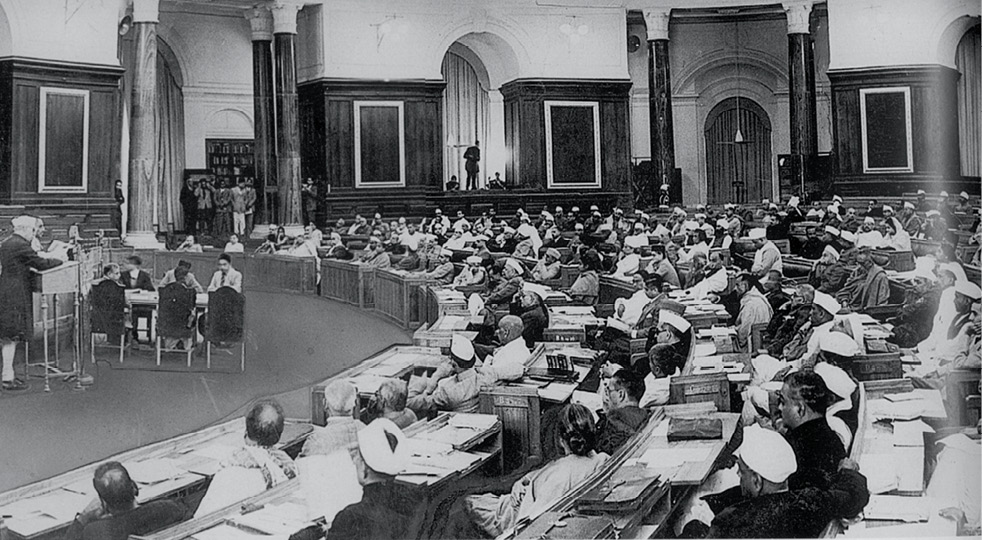
Fig. 2 – Jawaharlal Nehru introducing the resolution that outlined the objectives of the Constitution
Besides Muslims, India also had large populations of Sikhs and Christians, as well as many Parsis and Jains. Under the new Constitution, they would have the same rights as Hindus – the same opportunities when it came to seeking jobs in government or the private sector, the same rights before the law.
A third feature of the Constitution was that it offered special privileges for the poorest and most disadvantaged Indians. The practice of untouchability, described as a “slur and a blot” on the “fair name of India”, was abolished. Hindu temples, previously open to only the higher castes, were thrown open to all, including the former untouchables. After a long debate, the Constituent Assembly also recommended that a certain percentage of seats in legislatures as well as jobs in government be reserved for members of the lowest castes. It had been argued by some that Untouchable or as they were now known, Harijan, candidates did not have good enough grades to get into the prestigious Indian Administrative Service. But, as one member of the Constituent Assembly, H.J. Khandekar, argued, it was the upper castes who were responsible for the Harijans “being unfit today”. Addressing his more privileged colleagues, Khandekar said:
We were suppressed for thousands of years. You engaged us in your service to serve your own ends and suppressed us to such an extent that neither our minds nor our bodies and nor even our hearts work, nor are we able to march forward.
Along with the former Untouchables, the adivasis or Scheduled Tribes were also granted reservation in seats and jobs. Like the Scheduled Castes, these Indians too had been deprived and discriminated against. The tribals had been deprived of modern health care and education, while their lands and forests had been taken away by more powerful outsiders. The new privileges granted them by the Constitution were meant to make amends for this.
We must give them security and rights
Nehru wrote in a letter to the Chief Ministers of states: we have a Muslim minority who are so large in numbers that they cannot, even if they want, go anywhere else. That is a basic fact about which there can be no argument. Whatever the provocation from Pakistan and whatever the indignities and horrors inflicted on non-Muslims there, we have got to deal with this minority in a civilised manner. We must give them security and the rights of citizens in a democratic State.
The Constitution sought to balance these competing claims by providing three lists of subjects: a Union List, with subjects such as taxes, defence and foreign affairs, which would be the exclusive responsibility of the Centre; a State List of subjects, such as education and health, which would be taken care of principally by the states; a Concurrent List, under which would come subjects such as forests and agriculture, in which the Centre and the states would have joint responsibility.
Activity
Imagine a conversation between a father and son in a Muslim family. After Partition, the son thinks it would be wiser for them to move to Pakistan while the father believes that they should continue to live in India. Taking information from the chapter so far (and Chapter 11), act out what each would say.
Many Indians contributed to the framing of the Constitution. But perhaps the most important role was played by Dr B.R. Ambedkar, who was Chairman of the Drafting Committee, and under whose supervision the document was finalised. In his final speech to the Constituent Assembly, Dr Ambedkar pointed out that political democracy had to be accompanied by economic and social democracy. Giving the right to vote would not automatically lead to the removal of other inequalities such as between rich and poor, or between upper and lower castes. With the new Constitution, he said, India was
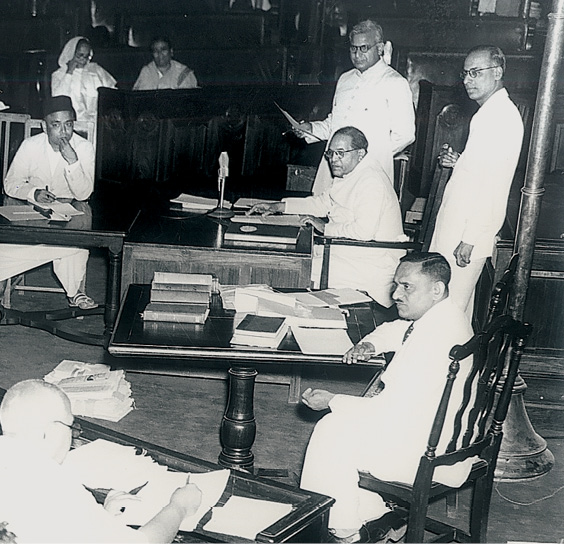
Fig. 3 – Dr B.R. Ambedkar
Dr. B.R. Ambedkar (1891-1956), respectfully referred to as Babasaheb, belonged to a Marathi-speaking dalit family. A lawyer and economist, he is best known as a revered leader of the Dalits and the father of the Indian Constitution
going to enter into a life of contradictions. In politics we will have equality and in social and economic life we will have inequality. In politics we will be recognising the principle of one man one vote and one value. In our social and economic life, we shall, by reason of our social and economic structure, continue to deny the principle of one man one value.
Activity
Discuss in your class, one advantage and one disadvantage today of the decision to keep English as a language of India.
How were States to be Formed?
Back in the 1920s, the Indian National Congress – the main party of the freedom struggle – had promised that once the country won independence, each major linguistic group would have its own province. However, after independence the Congress did not take any steps to honour this promise. For India had been divided on the basis of religion: despite the wishes and efforts of Mahatma Gandhi, freedom had come not to one nation but to two. As a result of the partition of India, more than a million people had been killed in riots between Hindus and Muslims. Could the country afford further divisions on the basis of language?
linguistic- Relating to language
... the first and last need of India at the present moment is that it should be made a nation … Everything which helps the growth of nationalism has to go forward and everything which throws obstacles in its way has to be rejected … We have applied this test to linguistic provinces also, and by this test, in our opinion [they] cannot be supported.
That the Congress leaders would now go back on their promise created great disappointment. The Kannada speakers, Malayalam speakers, the Marathi speakers, had all looked forward to having their own state. The strongest protests, however, came from the Telugu-speaking districts of what was the Madras Presidency. When Nehru went to campaign there during the general elections of 1952, he was met with black flags and slogans demanding “We want Andhra”. In October of that year, a veteran Gandhian named Potti Sriramulu went on a hunger strike demanding the formation of Andhra state to protect the interests of Telugu speakers. As the fast went on, it attracted much support. Hartals and bandhs were observed in many towns.

Fig. 4 – Potti Sriramulu, the Gandhian leader who died fasting for a separate state for Telugu speakers
On 15 December 1952, fifty-eight days into his fast, Potti Sriramulu died. As a newspaper put it, “the news of the passing away of Sriramulu engulfed entire Andhra in chaos”. The protests were so widespread and intense that the central government was forced to give in to the demand. Thus, on 1 October 1953, the new state of Andhra came into being, which subsequently became Andhra Pradesh.
After the creation of Andhra, other linguistic communities also demanded their own separate states. A States Reorganisation Commission was set up, which submitted its report in 1956, recommending the redrawing of district and provincial boundaries to form compact provinces of Assamese, Bengali, Oriya, Tamil, Malayalam, Kannada and Telugu speakers respectively. The large Hindi-speaking region of north India was also to be broken up into several states. A little later, in 1960, the bilingual state of Bombay was divided into separate states for Marathi and Gujarati speakers. In 1966, the state of Punjab was also divided into Punjab and Haryana, the former for the Punjabi speakers (who were also mostly Sikhs), the latter for the rest (who spoke not Punjabi but versions of Haryanvi or Hindi).
The making of Linguistic States
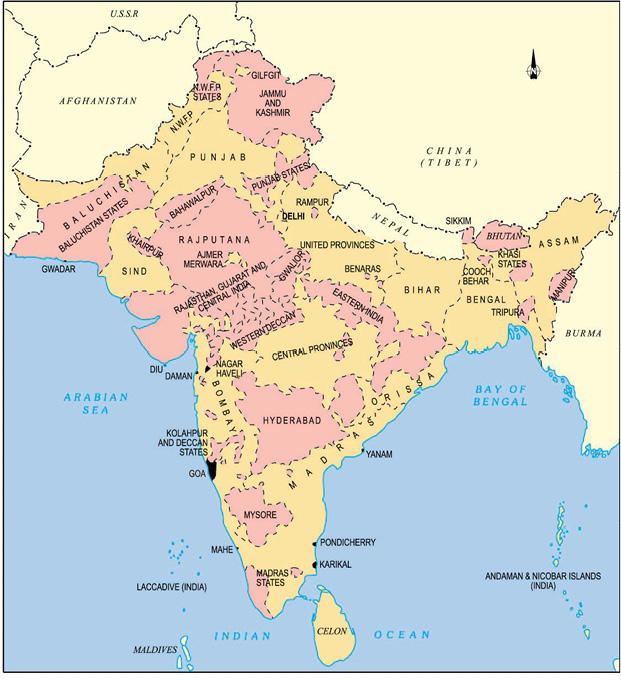
Fig. 5 (a) Inian Provinces and Princely States before 14 August 1947
 Princely States
Princely States British India
British India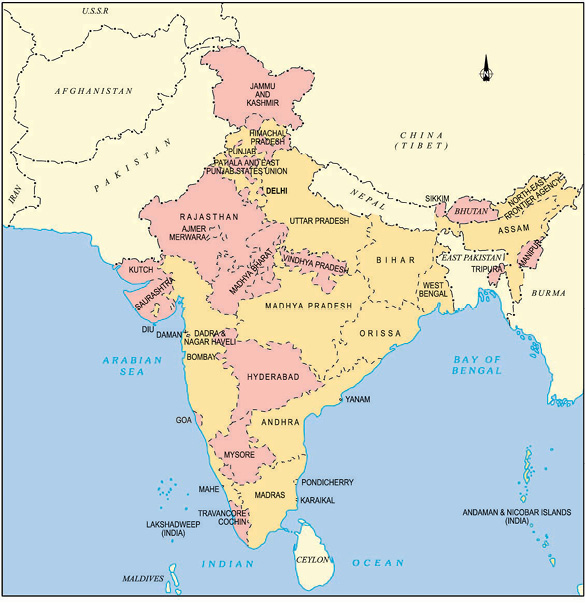
Fig. 5 (b) – Indian States before 1 November 1956
 Erstwhile Princely States*
Erstwhile Princely States* other state
other stateActivity
Look at Figs. 5 (a), 5 (b) and 5 (c). Notice how the Princely States disappear in 5 (b). Identify the new states that were formed in 1956 and later and the languages of these states.
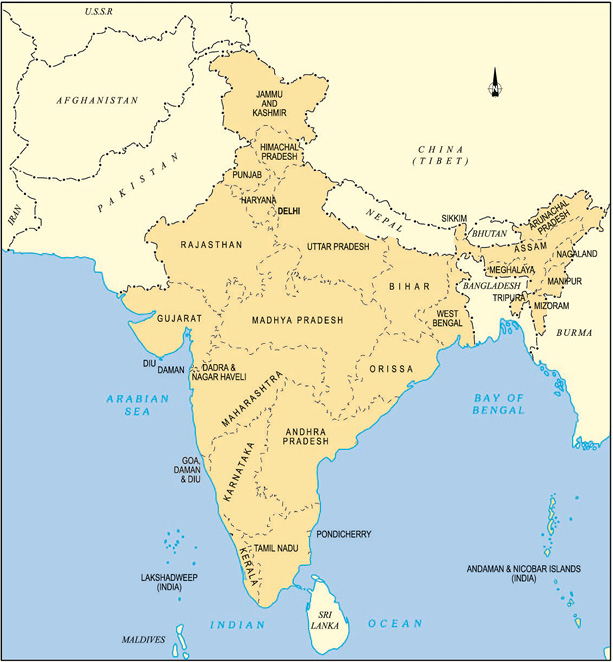
Fig. 5 (c) – Indian States in 1975
Planning for Development
Lifting India and Indians out of poverty, and building a modern technical and industrial base were among the major objectives of the new nation. In 1950, the government set up a Planning Commission to help design and execute suitable policies for economic development. There was a broad agreement on what was called a “mixed economy” model. Here, both the State and the private sector would play important and complementary roles in increasing production and generating jobs. What, specifically, these roles were to be – which industries should be initiated by the state and which by the market, how to achieve a balance between the different regions and states – was to be defined by the Planning Commission.
State – Concerned with the government. (Note that used in this sense, the word does not refer to the different states which are found in a country.)

Fig. 6 – The bridge on the Mahanadi river constructed to control the flow of water
Bridges and dams became the symbol of development in independent India.

Fig. 7 – Work going on at the Gandhi Sagar bandh
This was the first of the four dams built on the Chambal river in Madhya Pradesh. It was completed in 1960.
In 1956, the Second Five Year Plan was formulated. This focused strongly on the development of heavy industries such as steel, and on the building of large dams. These sectors would be under the control of the State. This focus on heavy industry, and the effort at state regulation of the economy was to guide economic policy for the next few decades. This approach had many strong supporters, but also some vocal critics. Some felt that it had put inadequate emphasis on agriculture. Others argued that it had neglected primary education. Still others believed that it had not taken account of the environmental implications of economic policies. As Mahatma Gandhi’s follower Mira Behn wrote in 1949, by “science and machinery he [mankind] may get huge returns for a time, but ultimately will come desolation. We have got to study Nature’s balance, and develop our lives within her laws, if we are to survive as a physically healthy and morally decent species.”
source 2
Nehru on the Five Year Plans
Prime Minister Jawaharlal Nehru was a great supporter of the planning process. He explained the ideals and purposes of planning in a series of letters he wrote to the chief ministers of the different states. In a letter of 22 December 1952, he said that: ... behind the First Five Year Plan lies the conception of India’s unity and of a mighty co-operative effort of all the peoples of India … We have to remember always that it is not merely the governmental machinery that counts in all this, but even more so the enthusiasm and co-operation of the people. Our people must have the sensation of partnership in a mighty enterprise, of being fellow-travellers towards the next goal that they and we have set before us. The Plan may be, and has to be, based on the calculations of economists, statisticians and the like, but figures and statistics, very important as they are, do not give life to the scheme. That breath of life comes in other ways, and it is for us now to make this Plan, which is enshrined in cold print, something living, vital and dynamic, which captures the imagination of the people.
Activity
Discuss in your class whether Mira Behn was right in her view that science and machinery would create problems for human beings. You may like to think about examples of the effects of industrial pollution and de-forestation on the world today.
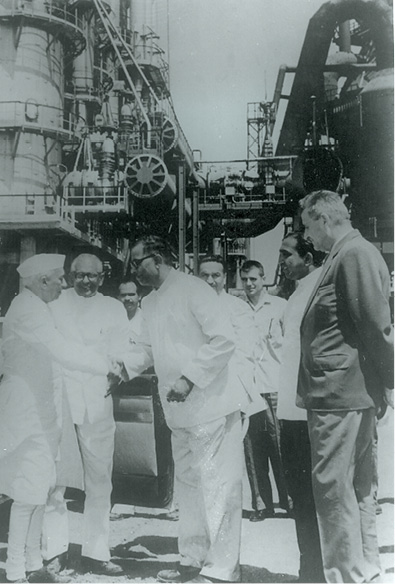
Fig. 8– Jawaharlal Nehru at the Bhilai Steel Plant
The Bhilai steel plant was set up with the help of the former Soviet Union in 1959. Located in the backward rural area of Chhattisgarh, it came to be seen as an important sign of the development of modern India after Independence.
The search for an independent foreign policy
India gained freedom soon after the devastations of the Second World War. At that time a new international body – the United Nations – formed in 1945 was in its infancy. The 1950s and 1960s saw the emergence of the Cold War, that is, power rivalries and ideological conflicts between the USA and the USSR, with both countries creating military alliances. This was also the period when colonial empires were collapsing and many countries were attaining independence. Prime Minister Jawaharlal Nehru, who was also the foreign minister of newly independent India, developed free India’s foreign policy in this context. Non-alignment formed the bedrock of this foreign policy.
Led by statesmen from Egypt, Yugoslavia, Indonesia, Ghana and India, the non-aligned movement urged countries not to join either of the two major alliances. But this policy of staying away from alliances was not a matter of remaining “isolated” or “neutral”. The former means remaining aloof from world affairs whereas non-aligned countries such as India played an active role in mediating between the American and Soviet alliances. They tried to prevent war—often taking a humanitarian and moral stand against war. However, for one reason or another, many non-aligned countries including India got involved in wars.

Fig. 9 – Jawaharlal Nehru and Krishna Menon arriving at the United Nations.
Krishna Menon led the Indian delegation to the UN between 1952 and 1962 and argued for a policy of non-alignment.
By the 1970s, a large number of countries had joined the non-aligned movement.
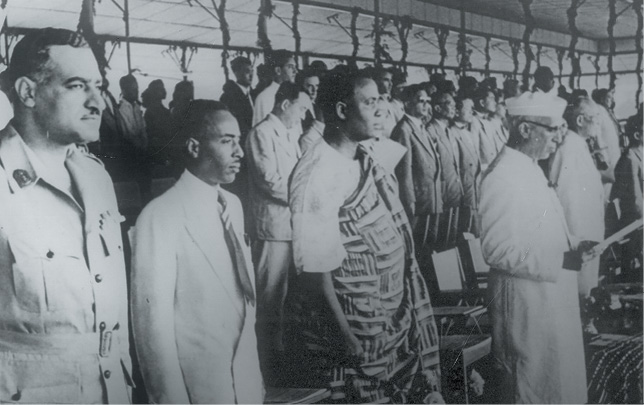
Fig. 10 – Leaders of Asian and African countries meet at Bandung, Indonesia 1955
Over 29 newly independent states participated in this famous conference to discuss how Afro-Asian nations could continue to oppose colonialism and Western domination.
The Nation, Sixty Years On
On 15 August 2007, India celebrated sixty years of its existence as a free nation. How well has the country done in this time? And to what extent has it fulfilled the ideals set out in its Constitution?
That India is still united, and that it is still democratic, are achievements that we might justly be proud of. Many foreign observers had felt that India could not survive as a single country, that it would break up into many parts, with each region or linguistic group seeking to form a nation of its own. Others believed that it would come under military rule. However, as many as thirteen general elections have been held since Independence, as well as hundreds of state and local elections. There is a free press, as well as an independent judiciary. Finally, the fact that people speak different languages or practise different faiths has not come in the way of national unity.
On the other hand, deep divisions persist. Despite constitutional guarantees, the Untouchables or, as they are now referred to, the Dalits, face violence and discrimination. In many parts of rural India they are not allowed access to water sources, temples, parks and other public places. And despite the secular ideals enshrined in the Constitution, there have been clashes between different religious groups in many states. Above all, as many observers have noted, the gulf between the rich and the poor has grown over the years. Some parts of India and some groups of Indians have benefited a great deal from economic development. They live in large houses and dine in expensive restaurants, send their children to expensive private schools and take expensive foreign holidays. At the same time many others continue to live below the poverty line. Housed in urban slums, or living in remote villages on lands that yield little, they cannot afford to send their children to school.
The Constitution recognises equality before the law, but in real life some Indians are more equal than others. Judged by the standards it set itself at Independence, the Republic of India has not been a great success. But it has not been a failure either.
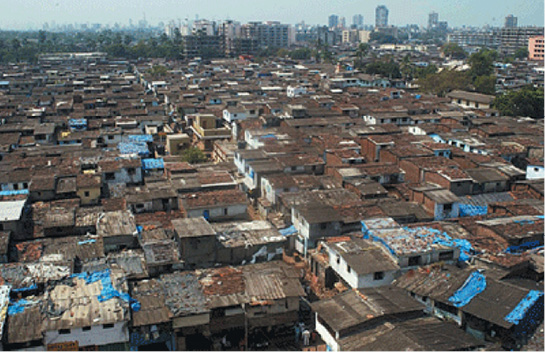
Fig. 11 – Dharavi in Bombay is one of the world’s largest slums
Notice the high-rise buildings in the background.
ELSEWHERE

Fig. 12 – Gun-carrying Tamil militant – a symbol of the civil war in Sri Lanka
What happened in Sri Lanka
In 1956, the year the states of India were reorganised on the basis of language, the Parliament of Sri Lanka (then Ceylon) introduced an Act recognising Sinhala as the sole official language of the country. This made Sinhala the medium of instruction in all state schools and colleges, in public examinations, and in the courts. The new Act was opposed by the Tamil-speaking minority who lived in the north of the island. “When you deny me my language,” said one Tamil MP, “you deny me everything.” “You are hoping for a divided Ceylon,” warned another, adding: “Do not fear, I assure you [that you] will have a divided Ceylon.” An Opposition member, himself Sinhala speaking, predicted that if the government did not change its mind and insisted on the Act being passed, “two torn little bleeding states might yet arise out of one little state”.
For several decades now, a civil war has raged in Sri Lanka, whose roots lie in the imposition of the Sinhala language on the Tamil-speaking minority. And another South Asian country, Pakistan, was divided into two when the Bengali speakers of the east felt that their language was being suppressed. By contrast, India has managed to survive as a single nation, in part because the many regional languages were given freedom to flourish. Had Hindi been imposed on South India, in the way that Urdu was imposed on East Pakistan or Sinhala on northern Sri Lanka, India too might have seen civil war and fragmentation. Contrary to the fears of Jawahalal Nehru and Sardar Patel, linguistic states have not threatened the unity of India. Rather, they have deepened this unity. Once the fear of one’s language being suppressed has gone, the different linguistic groups have been content to live as part of the larger nation called India.
You are witness to an argument between an adivasi and a person who is opposed to the reservation of seats and jobs. What might be the arguments you heard each of them put forward? Act out the conversation.
Let’s recall
1. Name three problems that the newly independent nation of India faced.
2. What was the role of the Planning Commission?
3. Fill in the blanks:
(a) Subjects that were placed on the Union List were _________, _________ and _________.
(b) Subjects on the Concurrent List were _________ and _________.
(c) Economic planning by which both the state and the private sector played a role in development was called a _________ _________ model.
(d) The death of _________ sparked off such violent protests that the government was forced to give in to the demand for the linguistic state of Andhra.
4. State whether true or false:
(a) At independence, the majority of Indians lived in villages.
(b) The Constituent Assembly was made up of members of the Congress party.
(c) In the first national election, only men were allowed to vote.
(d) The Second Five Year Plan focused on the development of heavy industry.
Let’s discuss
5. What did Dr Ambedkar mean when he said that “In politics we will have equality, and in social and economic life we will have inequality”?
6. After Independence, why was there a reluctance to divide the country on linguistic lines?
7. Give one reason why English continued to be used in India after Independence.
8. How was the economic development of India visualised in the early decades after Independence?
Let’s do
9. Who was Mira Behn? Find out more about her life and her ideas.
10. Find out more about the language divisions in Pakistan that led to the creation of the new nation of Bangladesh. How did Bangladesh achieve independence from Pakistan?